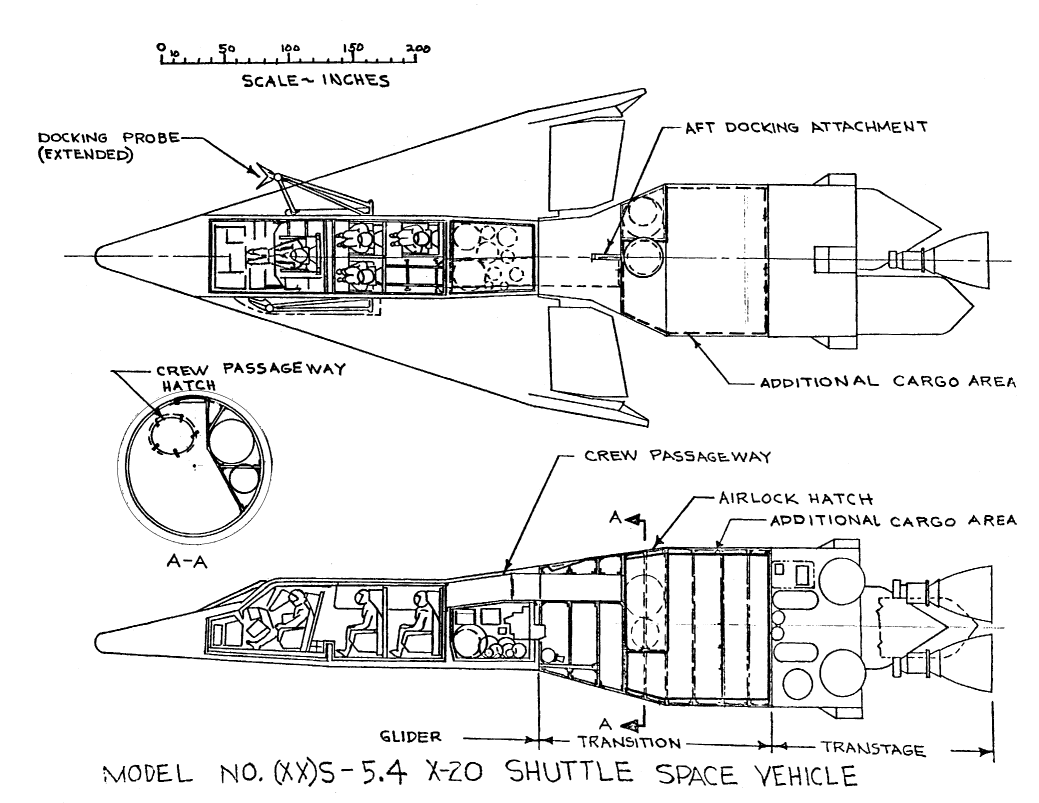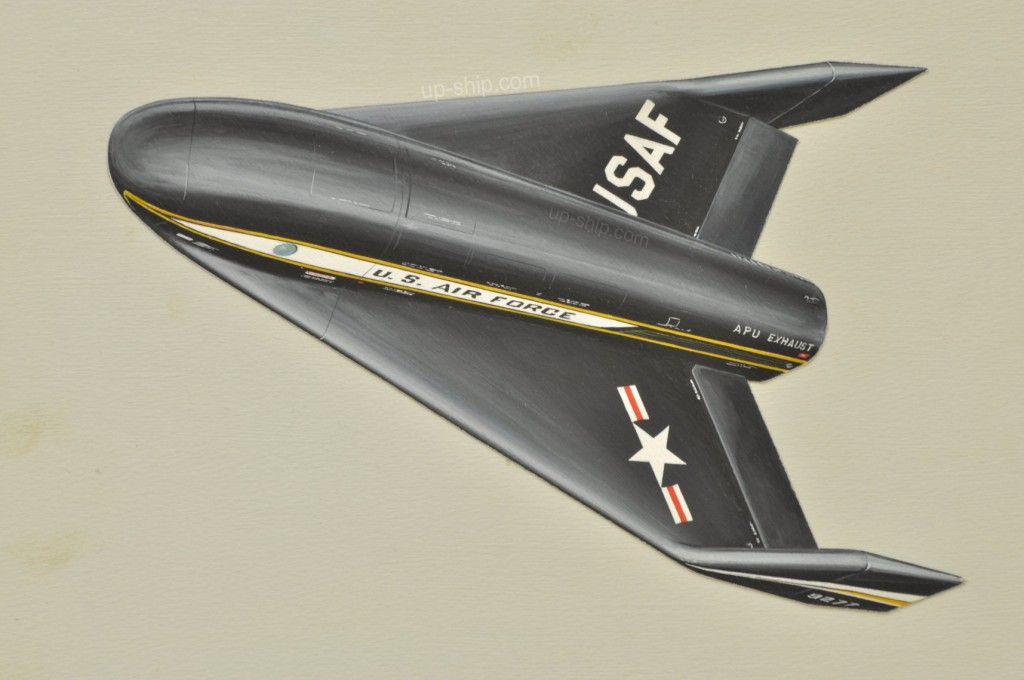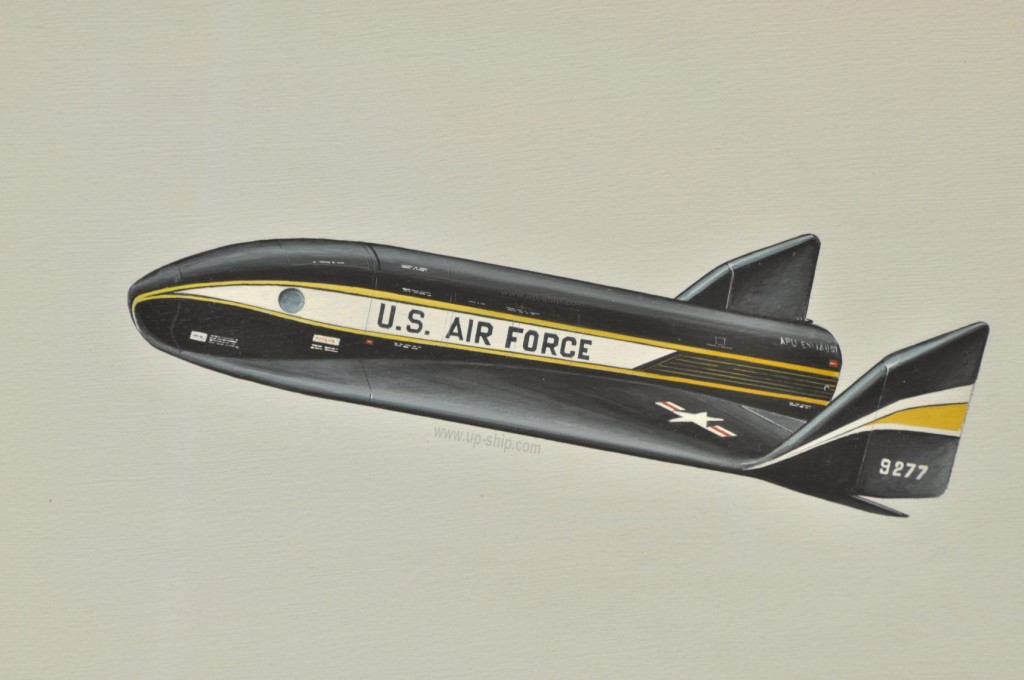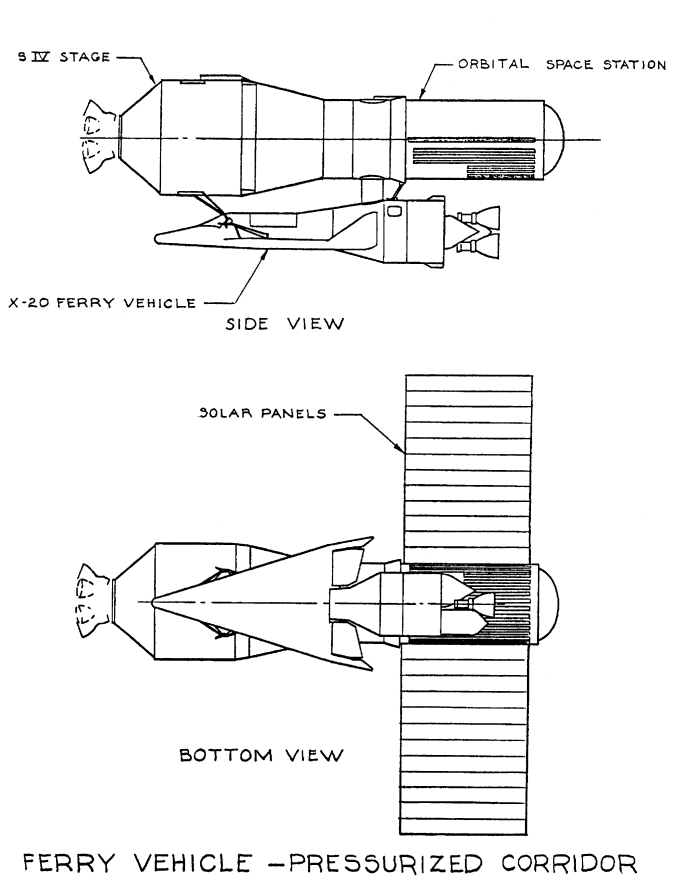More:
Search Results : dyna soar
First of four photos. Same Martin Dyna Soar design as shown previously. Note that the mockup appears to be made of cardboard… cheesy, but perfectly adequate for preliminary layout purposes. Plus, some little kid may have gotten one hell of a spiffy Space Patrol Rocket to play in after its utility for Martin was finished. . More likely, though, it got torched.
. More likely, though, it got torched.
A continuation:
Note that the cockpit of this little spaceplane was designed to be ejected in the event of an emergency. At this stage in the Dyna Soar program, the vehicle had lost its role as a bomber, and had been reduced to an R&D vehicle, thus the “cargo bay” stuffed full of equipment. Boeing’s final Dyna Soar design also had the instrument-filled cargo bay, but they fully expected to be able to ditch the instruments (which were mostly to measure and record pressure and temperature data all around the vehicle during re-entry) once the testing phase was over, and then proceed to fill the bay with useful payload, everything from anti-satellite hardware to passengers going to space stations.
The turbojet would very quickly be abandoned as weight climbed.
The second of two pieces of full-color artwork photographed at the archive of the Ira G. Ross Aerospace Museum in Niagara Falls. Both of these were painted on thick matt board.
It was a rare joy to find (well, “be shown,” to be more precise) not only color artwork of an early Dyna Soar concept, but the *actual* artwork. There are a whole lot of crappily reproduced black and white artists concepts for the Dyna Soar and other programs… and for every one of these sad remnants, there was, and might still be, a full-color painting that some talented artist worked away at. Sadly, chances are that many if not most of these works of art have been destroyed. The art tends to remain the property of the company that paid to have it produced… and for the most part, companies don’t give a damn about preserving such things. Art takes up space.
Throughout the life of the X-20 Dyna Soar project, Boeing made every effort to show how the vehicle would be useful. Several times, this meant using portions of the Dyna Soar, and sometimes the whole vehicle, as a component of yet another, larger vehicle.
One such design project was the Model 832/879 launch vehicle, which became one of the Boeing Aerospaceplane (ASP) contenders. This design married two sorta-conventional booster rockets together at the nose, with a Larry-Craigesque “wide stance” at the tail, forming a large V-shaped vehicle. By skinning over the area between the boosters, a lifting body of sorts was made, somewhat foreshadowing the later – and equally unbuilt – Lockheed-Martin Venturestar launch vehicle. Since in 1962 the idea of a complex flyback booster without a pilot seemed kinda silly, the vehicle needed a cockpit. So, what better idea than to nail a Dyna Soar onto the nose of the vehicle? The Dyna Soar provided not only a cockpit, it also provided a secure, ejectable recovery system for the pilot in the event of a disaster… and the wings of the Dyna Soar would serve as canards for the complete vehicle during re-entry, flyback and landing.
Shown below is a color three-view of the ASP design, rendered by Giuseppe De Chiara for the ASP article I wrote for Aerospace Projects Review (APR issue V2N5 can be obtained here). It’s shown with a payload of a single smallish rocket stage carrying five unmanned SAINT Satellite Interceptors.
Hopefully todays batch won’t have the troubles yesterdays had….
Available now is the 21-page article on the Model 844-2050E Dyna Soar (the final iteration, about 40% complete when the program was cancelled) that originally appeared in issue Volume 3 Number 4 of the original APR print run. It can be downloaded as a PDF file for $3.80.
Along with the Titan launched station shown here, Boeing also put forward a design for a “wet lab” space station to be launched by a Saturn I. This station would be a prepackaged unit not unlike the Manned orbiting Laboratory, but permanently fixed to the front of the Saturn I’s S-IV second stage. Once in orbit solar panels would unfurl. The hydrogen tank of the S-IV would be available for further utilization.
And to access the space station, Boeing suggested an operational version of the Dyna Soar as a Space Shuttle. The Shuttle would differ from the X-20 Dyna Soar in that the systems, materials and design would be refined after lessons learned from the X-20; the mass of science instruments would be deleted, freeing up considerable space in the center section to install seating for four space suited passengers (see here, here and here for more on that), and the power and thermal control systems in the aft repackaged to make room for a passageway tunnel leading into the Transstage adapter. Additional cargo space would be provided by splicing in a cylindrical section between the adapter and the Transstage. With further refinement, a sixth passenger could be squeezed into the aft section. Additionally, docking probes would be added to the upper side of the Dyna Soar wings.

If you like the sort of aerospace history stuff I post, you can support the cause by Buying My Stuff, which includes aerospace drawings and documents, as well as the journal of unbuilt aircraft and spacecraft projects, Aerospace Projects Review. Or you could just Donate. To the right for more posts like this, click on the Unwanted Blog header up top and then click on the “Projects” tag to the right.








